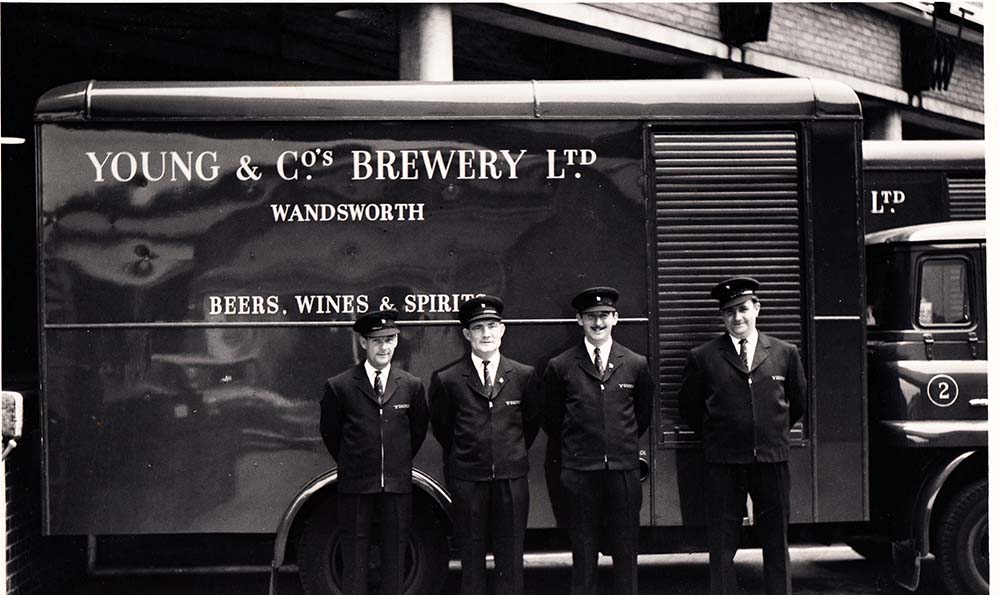
The History of Ram Quarter
The History of Ram Quarter
The fascinating tale of beer-making in Wandsworth
One of the most atmospheric spots in south west London, Ram Quarter’s heritage is well preserved among the cool new restaurants, immersive cinema and a bar that boasts skittles and the latest pub pursuit of axe throwing. There remains an air of the past, and it’s easy to imagine the dray horses clattering along the cobblestones as they collected their wares from the brewery to deliver to the local pubs. The brewery’s vast chimney still punctures the sky and the old buildings have been cleverly knitted into the new fabric of the restaurants and apartments.
There’s an annual beer festival and you can take a heritage tour of the brewery to discover how Wandsworth has been home to beer making since 1533. The brewery buildings used to be the base of Young’s, and are now owned by developer Greenland, with independent brewery Sambrook’s running the beer-making on site.
Local brewer John Hatch has worked for both Young’s and Sambrook’s – and in the years in between, Greenland’s support enabled John to run a nano-brewery so that the tradition would be unbroken.
It all started with an inn, says John: “The location was on a popular route from London to the West Country so it was an ideal location for an inn for travellers – it was named after the neighbouring Ram Field or Ram Square.”
Any site that dates that far back must have some interesting tales, and a ghost or two… there are three, apparently, with Draper’s Yard a popular spot for a claimed sighting.
John got into beer making from a young age… “I have always loved cask beer – ever since being in the Venture Scouts at school! At university, I loved beer so much that I spent all of my grant on it and couldn’t afford to go out so I learnt to brew myself. I used to throw parties to get rid of all of the excess alcohol and, at one of those parties, a good friend called Richard suggested that I do it for a living. It was a lightbulb moment, and I owe Richard a great deal of thanks as it has been a terrific career.”
His passion was evident when Young’s left the site and he continued on with his nano-brewery. “The nano-brewery was constructed from items left on site once Young’s had stopped brewing. It was a bit of a ‘scrapheap challenge’ so parts of the old canteen tea urn became the kettle. The fermenting vessels were made out of old filtration units which had been split in half and had their insides removed. The wort cooler was an old cellar cooling unit. We were very resourceful!
“We designed it to make four and a half gallons per brew, enough to fill the smallest cask (called a “pin”). Eventually demand exceeded supply and we realised that we could just about squeeze 9 gallons out, enough to fill a larger cask called a “firkin”. We regularly used to brew two firkins a week which is 18 gallons or half a barrel. When Young’s were on site they could produce 5,000 barrels a week so the volume of beer dropped to just a ten thousandth of what it was!”
As to the future, he says: “Beer has been changing constantly over the years and, hence, never gone out of fashion. So I hope it will continue. Several fads and crazes have come and gone over the years but the best beer styles keep on going. As a young brewer in the 1980’s I would never have believed that the “craft beer revolution” would one day take our industry and tastebuds by storm. So who knows what the future will hold but we can be sure that there will always be beer! Cheers!






